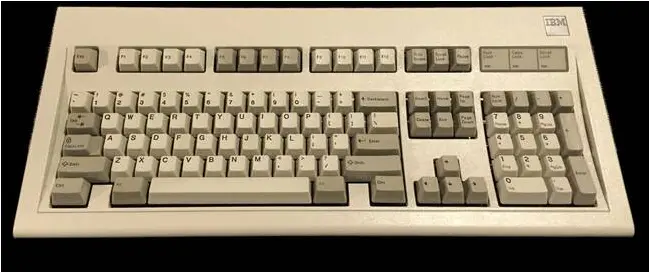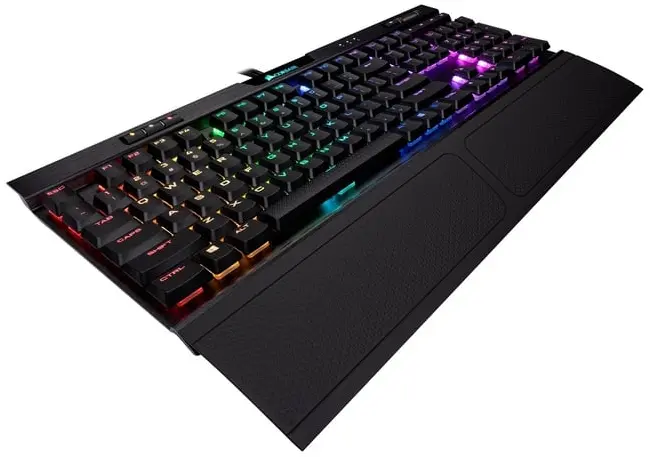Torvalds’ Typing Taste Test Touches Tactile Tragedy
Opinion Linus Torvalds is the global hero most of the world doesn’t even know exists. There are no big movies about him, no best-selling biographies, no ardent Torvaldian cultists with home altars and gilded icons. At least, we hope not.
To those who know, he led the digital world out from the imperial serfdom that had seemed its inexorable fate. Truthful, tetchy, with a lifetime of engineering code, architecture and the psychology of developers, at this moment in time he embodies the spirit of technology set free.
He’s also not afraid to experiment. When the state of FOSS on Apple Silicon machines had ripened enough, he switched platforms – writing in 2022: “It’s the third time I’m using Apple hardware for Linux development – I did it many years ago for PowerPC development on a ppc970 machine. And then a decade+ ago when the MacBook Air was the only real thin-and-lite around. And now as an arm64 platform.”
Last year Torvalds used an Ampere Altra Max system for Arm64 Linux builds, noting he was still using his Apple M2 laptop for “test builds weekly” rather than “continuously.”
Conversely, six months into an experiment with quiet, low-profile keyboards, he’s had enough and gone back to full fat, clacky mechanical Cherry Blue.
He is, of course, entirely correct, both to do the experiment and to return to the one true way of mechanical key switches. While there are many fine modern options, the finest keyboard in the world, ever, is the IBM Model M. This is not an opinion, it is fact. There are variations over time, some arguably inferior to others, but the oldest, made by pre-Lexmark IBM, wear the crown.
This year is their 40th anniversary. In a sane and just world, there would be celebrations in the streets. The modern equivalent to the buckling-spring genius of the Model M may be the Cherry Blue that Torvalds couldn’t leave; it is certainly much closer to perfection than most.
Yet even the Model M has its problems. It isn’t backlit, and excepting some ultra-rare variants is so very, very mid-’80s beige. For most, not so bad, but for those who need a black, strongly lit keyboard, the Model M’s magnificence is muted. Mostly, though, the beast is damnably noisy.
To the adherent, it is a glorious sound, every bit as satisfying as a Jaguar F type V8, and just as seductive to serious speeding. The rattling feedback as one types faster and faster urges the thoughts to flow more freely, the fingers to fly in a crisply choreographed digital deluge. To the seasoned practitioner, the Model M is the Steinway, the Stradivarius of the qwerty world, and it inspires greatness. To everyone else in earshot, it’s a godawful racket.
Which is why those who type in the company of others must experiment with other, more sociable keyboard technologies. It’s as if the input device sphere, having developed its Concorde, shrank back because of its own sonic boom. That’s simply not good enough.
For a device that directly interacts with humans as much as a keyboard, there is a criminal lack of development in all its aspects. It has a unique function, and we use our most sensitive, precise and exquisitely constructed anatomy to directly control it. Yet there is no agreed vocabulary to describe the totality of a keyboard experience. One key switch may give the tactile equivalent of the sudden snap of biting into a slice of water chestnut, another with the squishy feel of poking a lizard’s belly as it sleeps in the sun. Video has its color gamut, sound its response curves, but there is no scale, no vector space, for keyboards. It’s as vague as wine tasting when we need mass spectrometry.
There has been plenty of experimentation with other aspects of keyboard design, uncountable variations of ergonomic design and infinite perverse layouts. That qwerty layout, inherited from mid 19th century typewriters, couldn’t possibly be optimal, right? Turns out that any layout works well once learned, so as long as everyone sticks to the same one all is good. If only.
Ergonomics is more about human configuration than keyboard geometry. But in the aesthetics, the experience of the brain-finger-keyboard-senses-brain loop? There is no common language, no history of exploration with a literature and progression, no tradition akin to horology or organology (look it up, lazy). Yet this is the device through which almost all work is done in the digital universe that encompasses us all.
There is in truth no Steinway, no Strad of the computer keyboard, in that there is no master key smith dedicated to developing the art and artistry of creation. Is there a way to create a joyous feedback equivalent to the Model M but without the disagreeable side effect of driving others to thoughts of murder? Is there a way to tune a keyboard’s feel to individual tastes and needs? RGB backlighting does so not count. Where is the option to acquire a device so well engineered, so satisfying to use, that you carry it from job to job, a lifetime companion in your coding career? Victorian telegraphers did that with their favored Morse key, as do some present day Model M owners with the chutzpah to duke it out with annoyed colleagues.
There is work to be done. Then again, that’s guaranteed when Torvalds reports the need to experiment and progress not found. When something is so familiar it seems inevitable, there is often a revolution hiding in plain sight. Sometimes it’s the entire nature of operating system creation, sometimes it’s a Cherry Blue key switch. ®
A considerable amount of time and effort goes into maintaining this website, creating backend automation and creating new features and content for you to make actionable intelligence decisions. Everyone that supports the site helps enable new functionality.
If you like the site, please support us on “Patreon” or “Buy Me A Coffee” using the buttons below
To keep up to date follow us on the below channels.




![[PAYOUTSKING] - Ransomware Victim: T****s 2 image](https://www.redpacketsecurity.com/wp-content/uploads/2024/09/image-300x300.png)
